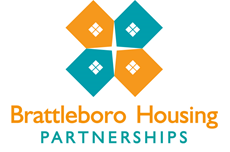Rental Assistance Demonstration (RAD)
RAD was created in order to give public housing authorities (PHAs) a powerful tool to preserve and improve public housing properties and address the $26 billion dollar nationwide backlog of deferred maintenance. RAD also gives owners of three HUD “legacy” program (Rent Supplement, Rental Assistance Payment, and Section 8 Moderate Rehabilitation) the opportunity to enter into long-term contracts that facilitate the financing of improvements.
Rental Assistance Demonstration (RAD) update: The BHP will be submitting an application to transfer all its existing public housing except Melrose Terrace to the Rental Assistance Demonstration program on July 20, 2018. This will move the subsidy basis for the residents from public housing to Project Based Housing Choice Vouchers. It will also enable the BHP to have access to many more funding mechanisms than it does now as HUD will no longer be on the deeds to the properties. The process will take from 12 to 24 months and has many large benchmarks to accomplish. The move to RAD is not a guarantee as BHP and HUD can decide against continuing with the move at any time during the lengthy process.
- RAD allows public housing agencies to leverage public and private debt and equity in order to reinvest in the public housing stock. This is critical given the 25.6 billion dollar backlog of public housing capital improvements.
- In RAD, units move to a Section 8 platform with a long-term contract that, by law, must be renewed. This ensures that the units remain permanently affordable to low-income households.
- Residents continue to pay 30% of their income towards the rent and they maintain the same basic rights as they possess in the public housing program.
- RAD maintains the public stewardship of the converted property through clear rules on ongoing ownership and use.
- The RAD program is cost-neutral and does not increase HUD’s budget. This program simply shifts units from the Public Housing program to the Section 8 program so that providers may leverage the private capital markets to make capital improvements.
How does RAD affect me as a Public Housing Resident?
Question: Will a RAD conversion affect my housing assistance?
Answer: You will not lose your housing assistance and you will not be rescreened because of a RAD conversion. Even though a RAD property can use private money to make big repairs, it will still receive money from HUD. With this subsidy from HUD, PHAs will manage RAD properties through either the PBV or PBRA programs. RAD requires that converted properties be owned or controlled by a public or nonprofit entity.
Question: Will a RAD conversion affect my rent?
Answer: If your building or development is converted to PBV or PBRA, your rent contribution will most likely be the same as it was under public housing—generally no more than 30% of your household’s adjusted gross income. Since the project-based Section 8 programs also set resident rents at 30% of adjusted income, most residents will not have rent increases as a result of a RAD conversion.
Question: How can residents be involved in the RAD process?
Answer: Before PHAs can apply to participate in RAD, HUD requires them to notify all residents in a development proposed for RAD conversion about their plans and conduct at least two meetings with those residents. These meetings are an opportunity for you to discuss the proposed conversion plans with your PHA, ask questions, express concerns, and provide comments. The PHA is required to submit your comments and its response to them as part of the RAD application.
Question: When can a PHA start the RAD conversion process?
Answer: After notifying residents as outlined above, PHAs can apply to HUD to convert assistance under RAD.
Question: Will I have to move if my building or home is being rehabbed?
Answer: Most needed repairs made as part of RAD are likely to be small and you will be able to stay in your home during construction. However, some apartments and buildings will require more extensive rehab. In these cases, you will be temporarily relocated but will have the right to return to your development once construction is completed. Generally, temporary relocation should not last longer than 12 months.
Click below to view the meeting notes:
For more information, please visit the HUD website at: https://www.hud.gov/RAD/impact
